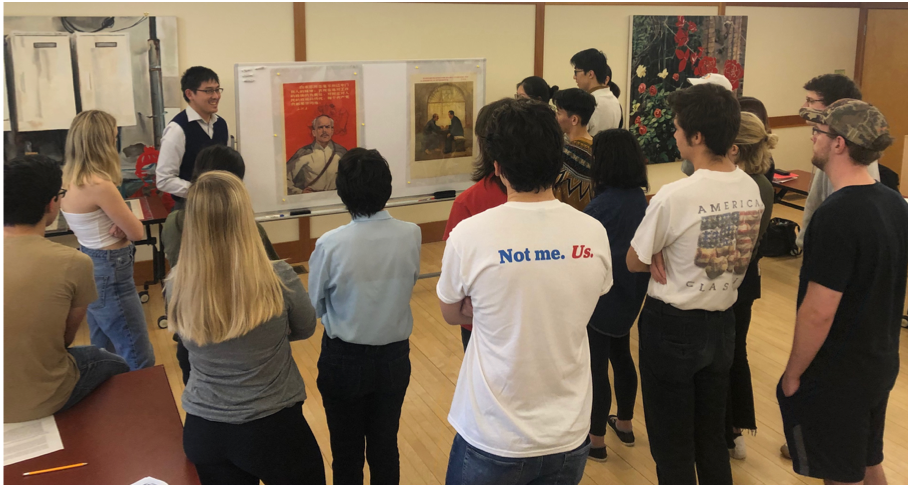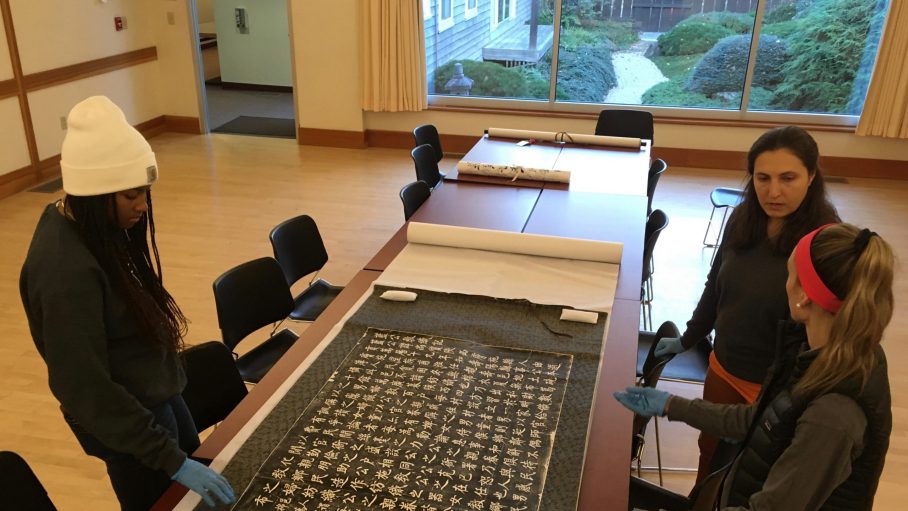About the Collection
The East Asian Art & Archival Collection was founded in 1987 with an initial gift of Chinese works of art and historical document from Dr. Chih Meng and his wife, Huan-shou Meng. Dr. Meng was a seventy-second generation descendent of the Confucian philosopher Mencius, and received his education in the Confucian Classics in Beijing, but went on to pursue higher education in the United States. During Dr. Meng’s career, he was the founding Director of the China Institute in America and authored two books: China Speaks and Chinese-American Understanding: A Sixty Year Search.Appreciative of American and Chinese cultures, Dr. Meng played a significant role in facilitating cross cultural understanding between the two countries.
Following Dr. Meng’s generous donation, alumni and friends of Wesleyan have gifted unique objects and archival materials from all over East Asia, thus expanding the collection. Now, the collection houses artifacts from China, Japan, Korea, Taiwan, Mongolia and Tibet. The collection is also home to a small collection of artifacts from South Asia and Southeast Asia.
The artifacts in the East Asian Studies Art & Archival Collection are educational resources which support teaching and research of East Asia in a number of disciplines. The archival collection’s documents, paper, and historical photographs offer primary sources for teaching and research in modern East Asian history; while the paintings, calligraphy, prints, rubbings, rare books, textiles, and other media in the art collection afford primary source material for art historical teaching and research, media studies, and historical interpretation. Many objects in the art collection—especially works of calligraphy, painting, and rare books—also provide resources for teaching and research in the field of East Asian Languages and Literatures.
Art Collection
The art collection includes works of painting and calligraphy, prints and rubbings, rare books, textiles, ceramics, and other miscellaneous media, from China, Japan, and Korea. The majority of the works date from the nineteenth and twentieth centuries. The Chinese holdings are the most extensive. Noteworthy items include: propaganda poster from the Chinese Cultural Revolution; Qing Dynasty imperial theater robe, calligraphy by Hu Shi (1891-1962), one of the most important literary and intellectual figures of the modern period; paintings by modern masters Ding Fuzhi (1879-1949) and Huang Junbi (1899-1991); a nineteenth century wardrobe-chest from the Imperial Palace in Beijing and specimens of nineteenth century Manchu court dress; a volume from the 1726 palace edition of the Gujin tushu jicheng, the great classified encyclopedia produced under the emperor Kangxi from a bronze font of 250,000 pieces of movable type; and a complete set of the 1681 edition of the Shengyu xiangjie, an illustrated text produced by a government official to make the moral teachings of Kangxi’s Sacred Edict accessible to the illiterate masses.
Archival Collection
The archival collection includes papers, documents, and historical photographs, mostly relating to interaction between China and the West in the nineteenth and early twentieth century. In addition to a number of miscellaneous individual items, the collection includes the papers of Courtenay H. Fenn (a Protestant missionary in Beijing before and during the Boxer Rebellion) and his son Henry C. Fenn (China scholar and architect of Yale’s Chinese language program); Harald Hans Lund (chief representative of the United Nations Relief and Rehabilitation Agency in North China, 1946-47, during the Chinese Civil War); Dr. Chih Meng (Founding Director of the China Institute in America); Stuart and Hilda Pease (Pease was stationed in Shanghai from 1921-25 where he worked as a buyer for the Eagle Silk Co. of New York); and George B. Neumann (Wesleyan Class of 1905 and Prof. of Sociology and Economics at West China Union University, Chengdu, from 1908 to 1923). The Meng collection is especially rich; in addition to Meng’s personal papers, it also contains historical materials that he collected relating to Chinese interaction with the West in the areas of technology, education, and cultural exchange. Particularly noteworthy is a collection of several boxes of original letters, papers, and photographs relating to the First Chinese Educational Mission in the U.S. (1872-1881).




